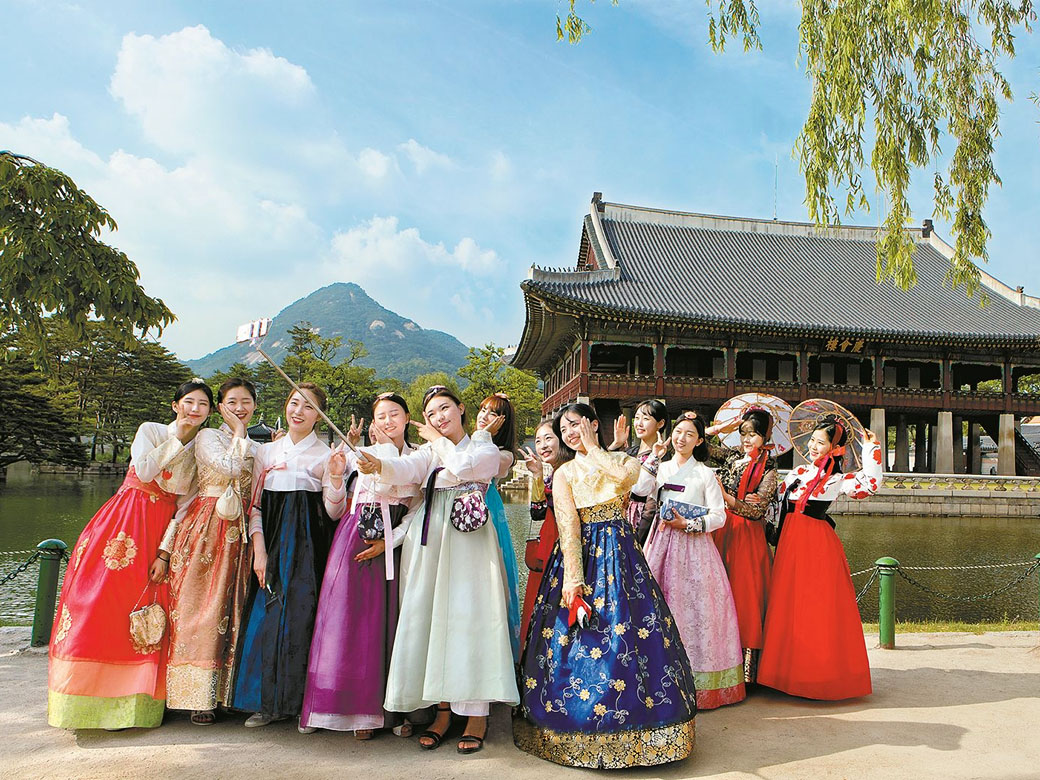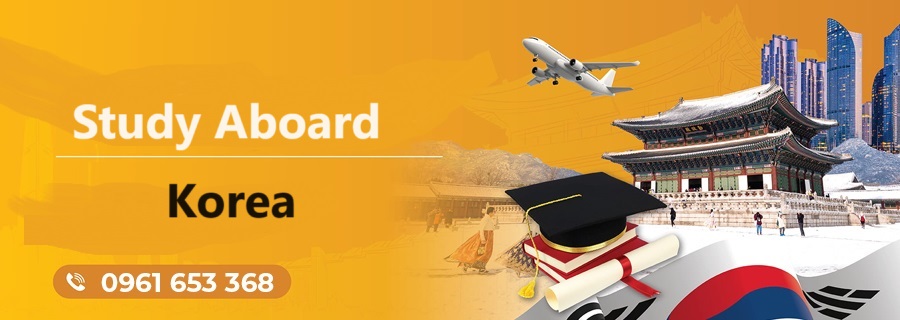Hotline: 0961.653.368 | 0928.693.368
Overview and study aboard in Korea
South Korea, officially the Republic of Korea, is a country in East Asia. It constitutes the southern part of the Korean Peninsula and borders North Korea along the Korean Demilitarized Zone.
The national flag of the Republic of Korea, also known as the Taegeukgi (also spelled as Taegukgi, lit. ’Taiji flag’), has three parts: a white rectangular background, a red and blue Taegeuk in its center, accompanied by four black trigrams, one in each corner. “Aegukga”, often translated as “The Patriotic Song”, is the national anthem of the Republic of Korea.
Korean Geography
Geologically, South Korea consists in large part of Precambrian rocks (i.e., more than about 540 million years old) such as granite and gneiss. The country is largely mountainous, with small valleys and narrow coastal plains.
South Korea has two volcanic islands—Cheju (Jeju), off the peninsula’s southern tip, and Ullŭng, about 85 miles (140 km) east of the mainland in the East Sea—and a small-scale lava plateau in Kangwŏn province.

There are fairly extensive lowlands along the lower parts of the country’s main rivers. The eastern coastline is relatively straight, whereas the western and southern have extremely complicated ria (i.e., creek-indented) coastlines with many islands.
Korea Climate
The greatest influence on the climate of the Korean peninsula is its proximity to the main Asian landmass. This produces the marked summer-winter temperature extremes of a continental climate while also establishing the northeast Asian monsoons (seasonal winds) that affect precipitation patterns.
South Korea’s climate is characterized by a cold, relatively dry winter and a hot, humid summer. The coldest average monthly temperatures in winter drop below freezing except along the southern coast. The average January temperature at Seoul is in the low 20s °F (about −5 °C), while the corresponding average at Pusan (Busan), on the southeast coast, is in the mid-30s °F (about 2 °C). By contrast, summer temperatures are relatively uniform across the country, the average monthly temperature for August (the warmest month) being in the high 70s °F (about 25 °C).
Annual precipitation ranges from about 35 to 60 inches (900 to 1,500 mm) on the mainland. Taegu, on the east coast, is the driest area, while the southern coast is the wettest; southern Cheju Island receives more than 70 inches (1,800 mm) annually. Up to three-fifths of the annual precipitation is received in June–August, during the summer monsoon, the annual distribution being more even in the extreme south. Occasionally, late-summer typhoons (tropical cyclones) cause heavy showers and storms along the southern coast. Precipitation in winter falls mainly as snow, with the heaviest amounts occurring in the T’aebaek Mountains. The frost-free season ranges from 170 days in the northern highlands to more than 240 days on Cheju Island.
Korea People and Language
The population of South Korea is 51.63 million people who highly homogeneous; almost the entire population is ethnically Korean, and there is a small minority of ethnic Chinese permanent residents. Originally people may have had links with the people of Central Asia, the Lake Baikal region of Siberia, Mongolia, and the coastal areas of the Yellow Sea.
All Koreans speak the Korean language, which is often classified as one of the Altaic languages, has affinities to Japanese, and contains many Chinese loanwords. The Korean script, known in South Korea as Hangul (Han’gŭl) and in North Korea as Chosŏn muntcha, is composed of phonetic symbols for the 10 vowels and 14 consonants.
Economy of South Korea
The economy of South Korea is a highly developed mixed economy. By nominal GDP, ₩2.24 quadrillion, it has the 4th largest economy in Asia and the 12th largest in the world.
The first targeted industries were textiles and light manufacturing, followed in the 1970s by such heavy industries as iron and steel and chemicals. Still later, the focus shifted to such high-technology industries as automobiles, electronics, and information technology.
Korea Religion and Culture
Freedom of religion is constitutionally guaranteed in South Korea, and there is no national religion. There also is little uniformity of religious belief, a situation that often is confusing to outside observers. Shamanism, Buddhism, and Confucianism constitute the background of modern Korean culture.
Historically, several religions prevailed successively: shamanism (the religious belief in gods, demons, and ancestral spirits responsive to a priest, or shaman), Buddhism, Daoism, and Confucianism. None of these religions was abandoned, however, when one supplanted another in dominance, and all have had a role in the country’s sociocultural development.

Korea Politics and Government
The government instituted after a constitutional referendum in 1987 is known as the Sixth Republic. The constitutional structure is patterned mainly on the presidential system of the United States and is based on separation of powers among the legislature, the executive, and the judiciary. The government system, highly centralized during most of South Korea’s existence, is less so under the Sixth Republic.
The president, since 1987 chosen by direct popular election for a single five-year term, is the head of state and government and commander of the armed forces. The State Council, the highest executive body, is composed of the president, the prime minister, the heads of executive ministries, and ministers without portfolio. The prime minister is appointed by the president and approved by the elected National Assembly (Kuk Hoe).
South Korea is divided administratively into the nine provinces (do or to) of Cheju, North Chŏlla, South Chŏlla, North Ch’ungch’ŏng, South Ch’ungch’ŏng, Kangwŏn, Kyŏnggi, North Kyŏngsang, and South Kyŏngsang; and the metropolitan cities (kwangyŏksi) of Seoul, Pusan, Taegu, Inch’ŏn, Kwangju, Taejŏn, and Ulsan. Each has a popularly elected legislative council. Provinces are further divided into counties (gun) and cities (si), and the large cities into wards (ku) and precincts (tong). Provincial governors and the mayors of province-level cities are popularly elected.
TUE LAM VJC CO., LTD
Tax Code: 5801503727
Hotline: 0961.653.368
Email: tuelamvjc.edu@gmail.com
Address: Number 114 Xo Viet Nghe Tinh, Ward 8, Da Lat City



